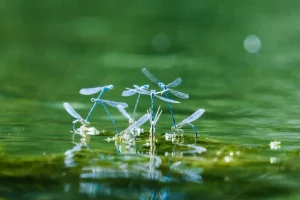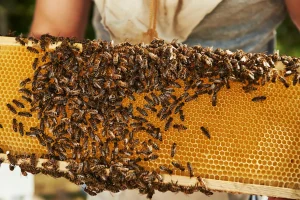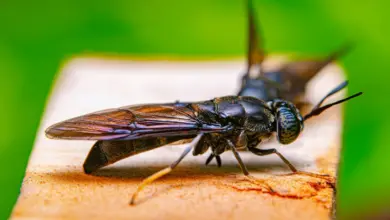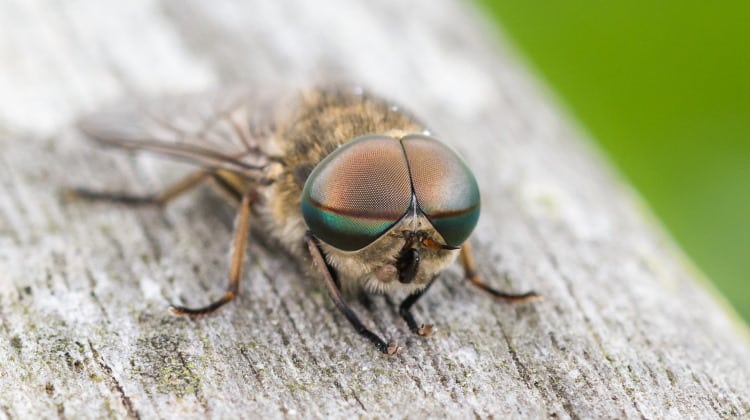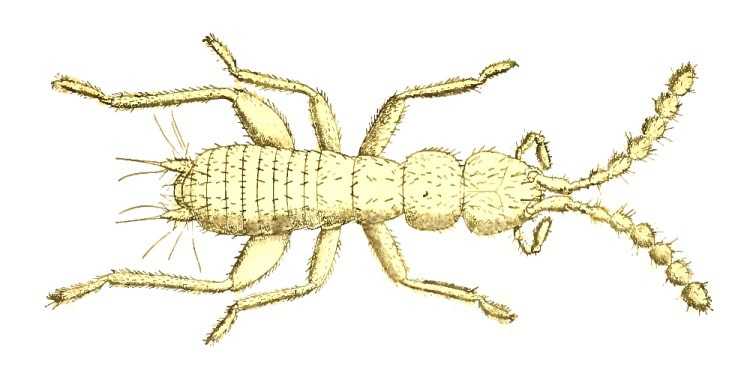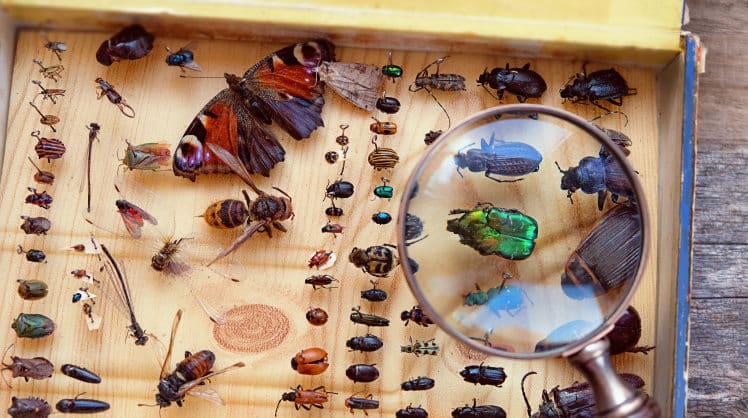The Decline Of Insects
The Decline Of Insects On Our Planet
According to a global scientific review published in Biological Conservation, over 40% of all insect species are threatened with extinction in the coming decades. Insects play a critical role in enabling the normal functioning of ecosystems globally. They pollinate over 75% of leading food crops, allow plant reproduction in the wild, recycle nutrients in the soil, control pests, and provide a vital food source for larger animals.
However, major scientific studies have conclusively shown severe declines in populations of insects like bees, butterflies, beetles, and flies over the past few decades.
The alarmingly high number signals a significant crisis, as insects make up a huge proportion of animal life on Earth. The review shows that intensive, industrialized agriculture is the primary driver of this insect decline through heavy pesticide usage, habitat loss, and pollution.
In this comprehensive guide, we will take a look at the evidence from dozens of datasets on various insect groups and highlight the global scale and urgent severity of insect population drops worldwide.
The Importance of Insects in Ecosystems
Insects play a significant role in enabling the normal functioning of ecosystems across the planet. While small, these invertebrates contribute to key ecological processes that sustain plant and animal life.
Here are some of the vital functions performed by different insects that showcase their indispensable place in the web of life:
Pollination
The most important pollinators like bees, butterflies, moths, beetles, flies, and many other insects pollinate over 75% of leading global food crops, as well as nearly 85% of wild plants.
Transferring pollen between flowers allows fertilization and reproduction in these plant species. Without insect pollinators, ecosystems would lose much floral diversity, and food crop yields would plummet.
Natural Pest Control
Helpful garden insects and predatory insects like ladybugs, lacewings, praying mantises, ground beetles, and parasitic wasps naturally regulate populations of plant-eating insects. This biocontrol limits damage to crops and vegetation caused by excessive pests. Without these predatory and parasitic insects, plant-eaters would explode out of control.
Nutrient Cycling
Many insects facilitate the breakdown of organic matter like manure, plant debris, and carcasses. Dung beetles, in particular, recycle animal feces, which is a crucial nutrient source in many habitats. Ants and termites also decompose dead wood and plants into rich soil. Without these insects aiding decomposition and releasing nutrients into the environment, the nutrient cycle would be disrupted.
Soil Health
Ants, termites, and dung beetles decompose organic waste and dead material. This releases nutrients to enrich soils.
Food Source
Insects like caterpillars, grubs, and larvae are a major food source for species like birds, lizards, amphibians, bats, and small mammals globally.
Insects provide essential fatty acids, protein, and micronutrients that support growth and reproduction. Many creatures would starve or suffer malnutrition without this prey staple that underpins food chains.
Ecological Indicators
Due to their rapid reproduction and short lifecycles, insects like butterflies and dragonflies respond quickly to environmental changes.
Declining insect populations signal ecosystem damage before effects in longer-lived species become apparent. Insects act as early warning systems of problems like pollution, habitat loss, and climate change.
Causes of the Decline
Habitat loss, pesticides, climate change, invasive species, and artificial lighting have cumulatively created a perfect storm of devastating insect numbers:
Intensive Agriculture
Modern intensive farming relies heavily on pesticides, chemical fertilizers, and the loss of natural habitats like hedgerows to maximize production. This directly harms insects through toxic exposure and destroys their living and breeding places. Overuse of pesticides is linked to insect reproductive issues, poisoning, and death.
Herbicides reduce flowering plants that insects need for food. Fertilizers run off fields and create algae blooms that reduce aquatic insect numbers. Bulldozing hedgerows and woodlands to expand fields takes away vital habitat.
Intensive agriculture profoundly alters the landscape to the detriment of the insects that live there. The review found that areas with high-intensity farming show the most significant declines compared to natural reserves.
Urbanization
As cities and suburbs expand outwards, they destroy the forests, meadows, wetlands, and other natural environments that insects need. Light, noise, and air pollution from urban buildup also degrade adjacent ecosystems, reducing insect survival and reproduction.
For instance, streetlights lure nocturnal moths to their deaths and prevent fireflies from signaling properly during mating. The more nature is displaced by concrete and asphalt, the fewer places insects have to thrive.
Climate Change
Rising global temperatures, shifting rainfall patterns, increased frequency of droughts, fires, and extreme weather events affect insects. Their life cycles require precise conditions to develop from egg to larva to adult. Even small climate variations can desynchronize stages, leading to death. For example, caterpillars may hatch before the leaves they feed on emerge in spring.
Climate change also alters where insects can survive, as they are highly temperature-sensitive. As conditions exceed livable limits in current habitats, some insects can’t disperse fast enough to new climate-compatible areas. These complex, disruptive effects further stress insect populations.
Habitat Loss and Degradation
Agricultural expansion and urban development have destroyed vast areas of natural forests, grasslands, and wetlands that insects need for sustenance and reproduction.
Fragmentation of habitats also isolates insect communities, making them more vulnerable to extinction. For instance, the U.S. has lost 150 million acres of natural habitat since 1990.
Pesticides and Pollutants
Synthetic pesticides and fertilizers used in conventional farming are highly toxic. They directly kill bees, beetles, and other beneficial insects, cause sub-lethal harm to reproduction and development, and persist as residuals in soil and waterways, creating lasting contamination.
Invasive Species
Trade and travel have spread insects, plants, and pathogens outside native ranges where local insects lack evolved defenses against these newcomers. Often, the reproduction and survival of native species plummet.
Artificial Lighting
Excess outdoor lighting interferes with navigation, mating, feeding, and other nocturnal insect behaviors. It lures moths to their demise and disorients pollinators.
Disrupted Pollination
Crop yields will fall without adequate insect pollinators like bees, butterflies, and hoverflies. For example, sentinel bee declines in the US from 2006-2013 reduced almond yields by 10%. Natural plant reproduction will also suffer.
Increased Pest Damage
With fewer ladybugs, mantises, lacewings, and other predators to control pests, crop losses and costs rise. Farmers consequently use more harmful pesticides, further impacting insects.
Soil Degradation
Soil health and fertility drops without burrowing, decomposing insects like ants and earthworms to aerate the soil and recycle nutrients. Land productivity declines.
Effects of the Decline
Loss of Biodiversity
Insects are essential components of terrestrial and aquatic ecosystems. As insect numbers dwindle, it can trigger the cascading extinction of the plants, animals, and microbes that rely on them for pollination, food, nutrient cycling, and other essential interactions.
Like dominoes, the loss of insects leads to the loss of the living web they help support, potentially resulting in an empty, barren landscape unable to sustain much biodiversity. Their rich diversity took hundreds of millions of years to evolve, but human activity could destroy them in mere decades.
Decline in Food Production
Around 75% of leading global food crops depend on animal pollination, chiefly by bees, butterflies, moths, beetles, and flies. As these critical pollinator populations decline, crop yields for vital staples like apples, tomatoes, blueberries, cacao, squash, and almonds will drop significantly.
Food supplies will be reduced, forcing increased dependence on a few wind-pollinated cereals like wheat and rice. Nutritional health will suffer from a lack of diverse produce options. Reproducing food crops will also get costlier without free insect pollination.
Disruption of Food Webs
Insects do not exist in isolation. They form the base of complex interconnected food chains. Fish, frogs, reptiles, birds, bats, and small mammals all consume insects as a major protein and nutrient source.
Without this prey, species higher up the food web suffer malnutrition, smaller sizes, developmental issues, disease, and mortality from starvation. Entire ecosystems change as creatures lose this fundamental food source and the web unravels.
Economic Impacts
Our economies rely on insects’ services, though we often take them for granted. For the US alone, managed honeybees pollinate over $15 billion of crops annually. Insects also provide natural pest control worth billions, reducing the need for chemical inputs.
Dung beetles alone are worth $380 million per year to the US cattle industry by burying manure and reducing pests. Ecotourism tied to colorful insects like butterflies generates lots of revenue worldwide. Losing these free contributions from insects has major financial implications.
What Can We Do?
While the insect decline is alarming, there are solutions we can implement in agriculture, urban planning, climate policy, and conservation to prevent disaster:
Reduce Pesticide Usage
Making farming less reliant on chemical inputs by using integrated pest management, natural predators, crop rotation, and other agroecological methods will significantly benefit insects. Governments can restrict the most toxic insecticide classes as the EU has done.
Protect and Restore Habitats
Creating more nature reserves, regenerating forests, planting native flowers, installing green roofs, and transforming vacant urban land for insects provide habitat. Constructing wildlife corridors connects fragmented populations.
Mitigate Climate Change
Shifting energy production to renewable sources, increasing efficiency, and encouraging plant-based diets reduce emissions overheating the planet. Supporting climate-friendly policies helps stabilize conditions. Assisted migration of affected insects may be needed.
Promote Sustainable Agriculture
Organic, diversified, and regenerative agriculture that mimics natural ecosystems preserves insect diversity. So does reducing food waste and meat consumption. Buying from eco-conscious farmers supports the transition.
In summary, the insect crisis requires transformative change across our economies, society, and personal habits to protect these tiny creatures fundamental to life on Earth.
Starvation at Higher Trophic Levels
Many birds, reptiles, amphibians, fish, and mammals that prey on insects as part of their diets face malnutrition, smaller sizes, and sharp population declines without this food source. Insects need to be protected to save our Ecosystem.
Solutions to reverse falling insect numbers include:
- Protect and restore natural habitats like forests, prairies, and wetlands to expand insect-friendly areas. Connect fragmented zones.
- Shift agriculture to organic, regenerative practices without pesticides and with on-farm biodiversity. Create insect refuges.
- Enact policies to achieve net-zero greenhouse gas emissions and limit climate change. Assist vulnerable insect migration.
- Impose strict controls on importing non-native species and contain spread from invaded areas.
- Restrict outdoor lighting usage and public lighting to motion-activated, insect-friendly wavelengths.
- Fund more monitoring and research on insect populations, causes of decline, and conservation techniques.
- Educate the public on how to help insects via gardening, reduced mowing, limiting pesticide usage, and political advocacy.
What Would the World Be Like Without Insects?
It’s hard to imagine a world without insects. These tiny arthropods play major roles in ecosystems, from rainforests and grasslands to oceans and urban environments. Over 1 million insect species have been identified, and they make up over half of Earth’s animal life.
But insect populations are rapidly declining worldwide due to human impacts like habitat loss, pesticide use, invasive species, pollution, and climate change.
Let’s explore some potential scenarios.
Massive Biodiversity Loss
Insects are a vital food source for many birds, fish, amphibians, reptiles, and small mammals that consume them. Without this prey, these insectivores would decline dramatically or even face extinction themselves without alternate food sources. And insects themselves display dazzling diversity – there are over 350,000 known beetle species alone.
Wiping out insects would mean obliterating hundreds of thousands of unique lifeforms that took millions of years to evolve. It would be a catastrophic reduction in the planet’s biodiversity. Entire ecosystems would be unlikely to survive this loss. We cannot even fully predict the vast cascading effects across plant and animal populations from removing insects as key species in food webs.
Crop Catastrophe
Around 75% of leading global food crop plants rely on animal pollination to set seed and reproduce, chiefly by insects like bees, moths, butterflies, beetles, and flies. Without pollinators, crop yields for vital foods like fruits, nuts, vegetables, coffee, and cocoa would plummet.
For example, research estimated that a total bee disappearance in the U.S. would deeply slash yields of cherries (100%), apples (80%), blueberries (90%), and almonds (100%). Farmers would be forced to attempt costly and labor-intensive hand pollination – and still produce far less food. Global food supplies would be decimated, potentially leading to widespread famine and conflict over the remaining crops.
Nutrient Cycle Disruption
Many insects like ants, termites, and beetle larvae enrich and aerate soil through burrowing activities, transporting nutrients, and breaking down organic matter and waste. With these insects gone, soils would become infertile and inhospitable for plant growth.
Processes like the decomposition of manure, dead animals, and fallen leaves would be restricted, causing a buildup of waste. Soil erosion could accelerate without insect tunnels regulating water filtration and holding layers together. Food production potential and natural ecosystem processes would be severely impaired by this nutrient cycle and soil health breakdown.
Pest Population Explosions
Insects include many species like ladybugs, lacewings, predatory wasps, and dragonflies that act as natural pest control by feeding on plant-eating insects. With these predatory and parasitic insects extinct, destructive pest populations of aphids, scale, mites, and caterpillars would surge out of control.
They would decimate natural vegetation and ravage crops, trees, and ornamental plants. Pesticide use in an attempt to control them would become even more excessive, further contaminating ecosystems. Loss of natural insect predation would create an uncontainable cascade of plant devastation.
Medical Crises
Over 80% of wild plants rely on insect pollination. The loss of plant diversity resulting from vanishing pollinators would also include medicinal plants. Potentially life-saving drug discovery and development would be hampered without diverse floral ecosystems.
Insects like larvae are also used medically for wound debridement. Insects naturally compete with or predate on organisms that transmit diseases to humans, like mosquitoes and ticks. These ecological checks would be removed. With higher risks of infectious diseases, medical treatment gaps, and health impacts of malnutrition, human life expectancy could decline.
The complete disappearance of insects would ultimately make Earth largely inhospitable for humans and many other species. Preventing their extinction is critical for preserving biodiversity, food production, healthy ecosystems, and our quality of life.
While a world without insects is hard to visualize, we already see glimpses through their frightening population declines. Swift action is needed to avert this doomsday scenario. Our future depends on saving these small but mighty creatures.
Conclusion
Insects are the cornerstone of ecosystems, and humanity is utterly dependent on their services. Yet our actions have brought them to the brink of collapse, risking tremendous harm to economies, food systems, and the living world.
We must implement sweeping changes to conserve insects before tipping points are crossed, and the damage becomes irreversible. Our future, lifestyles, and planet depend on the tiny invertebrates beneath our feet.

